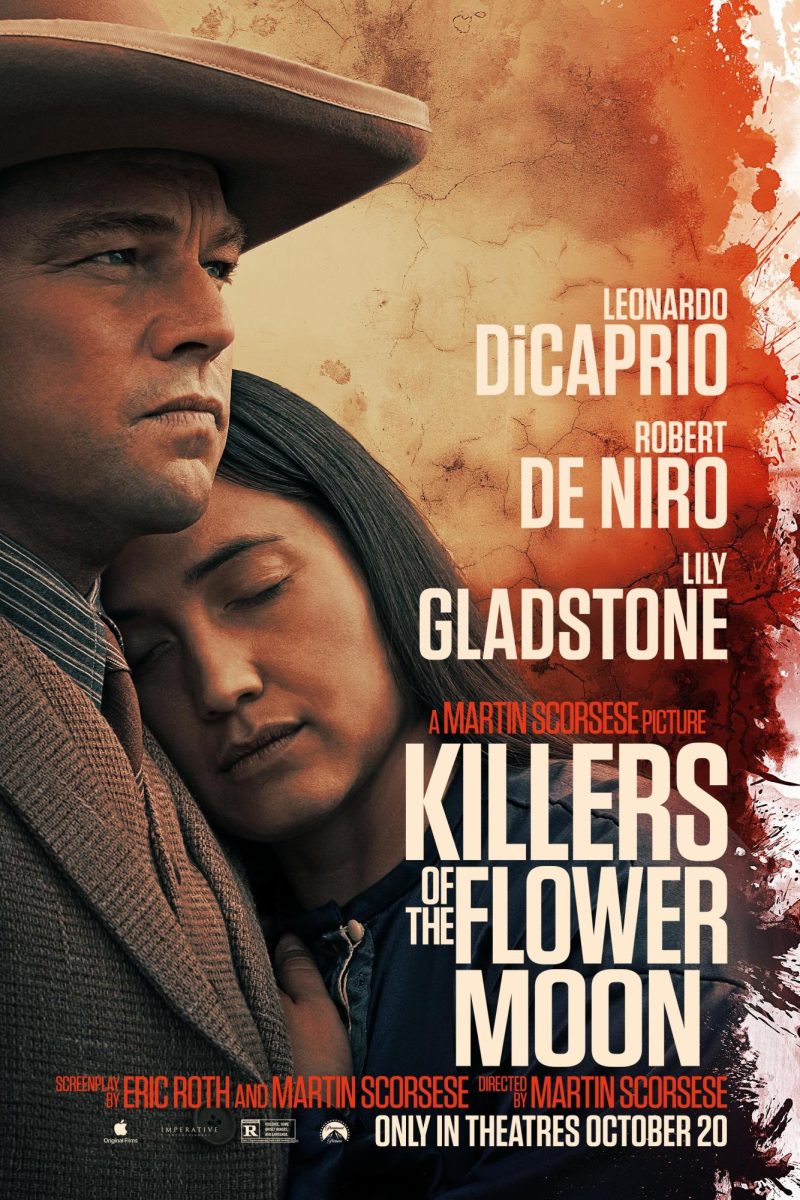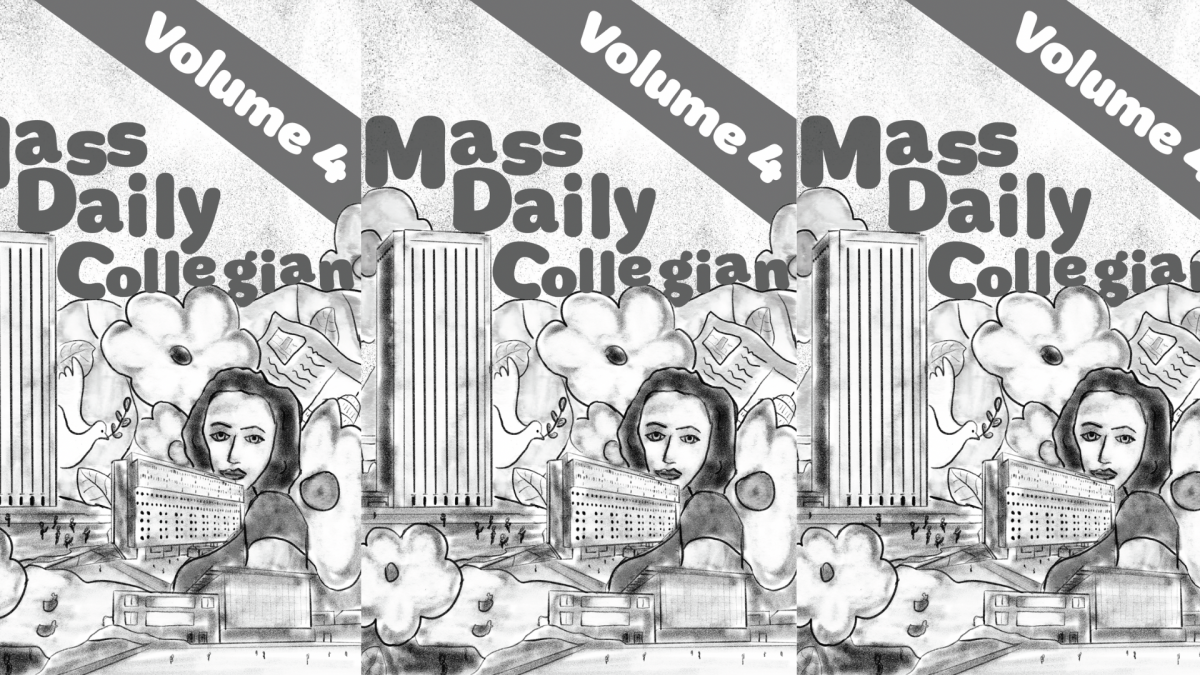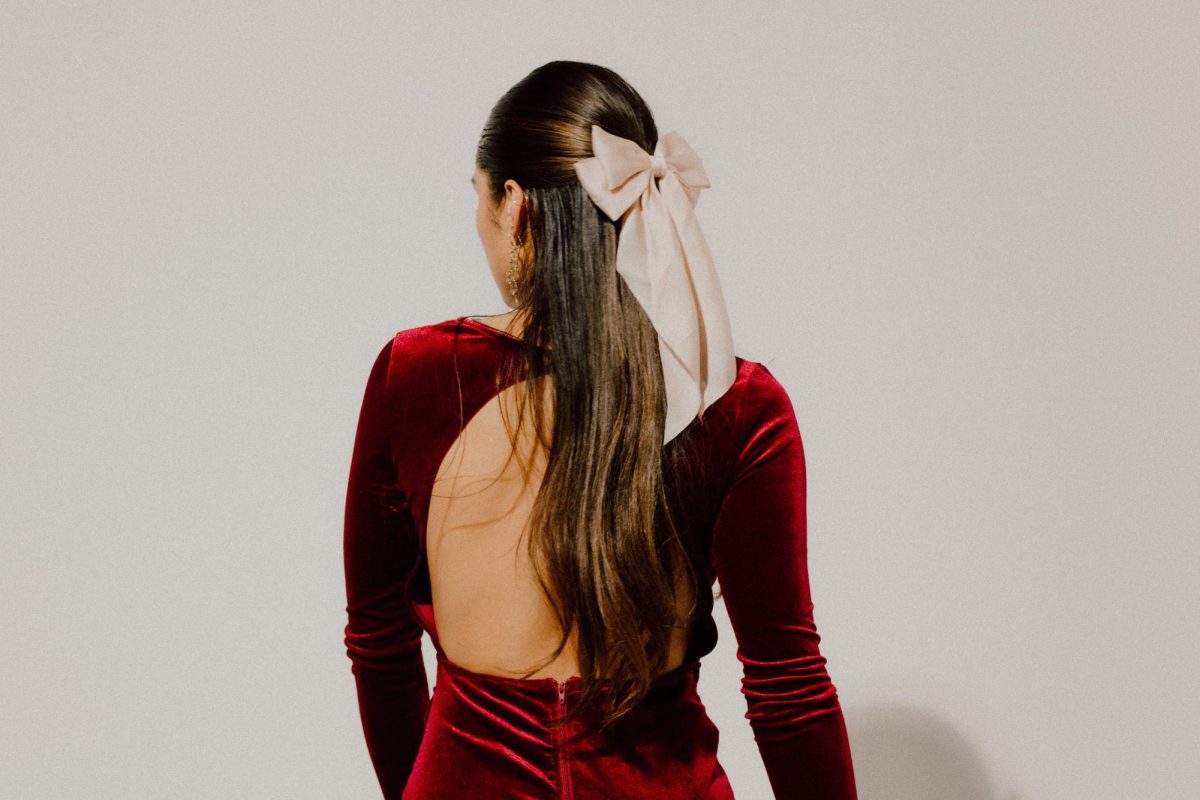Martin Scorsese is no stranger to violence. Most well-known for his typical brazen mafia tales like “Goodfellas” and “The Departed,” “Killers of the Flower Moon” seems to be a new endeavor for the 80–year–old director at first glance. But as the story unravels, it’s clear this movie falls in the similar vein of violence, perhaps the worst violence Scorsese has explored yet.
The film chronicles the brutal murders of wealthy Osage people who found oil on their land, and the various white men who plotted to take their wealth. Over three hours and 26 minutes, Scorsese beautifully unfolds this terrible tale of greed. “Killers of the Flower Moon” is a genre–mixing epic chronicling the true terror the Osage people faced — expertly shot, composed and acted.
It’s great progress that indigenous stories are being told on the silver screen by such a well-known director – but perhaps it’s not enough. The Native American community has mixed feelings on the film, and I believe an opportunity was missed to pay better homage to the Osage people and their pain.
“Killers of the Flower Moon” is mainly told from the perspective of Ernest Burkhart, played by Leonardo DiCaprio. Returning from service during World War I, he moves to Oklahoma to live with his well-off rancher uncle William Hale, played by Robert De Niro. Hale is well equated with the Osage people and has even learned their native language. At the behest of Hale, Burkhart takes up work as a driver for the wealthy Osage citizens. He quickly falls for Mollie Kyle, the current matriarch of a wealthy Osage family. Hale not so subtly indicates to Burkhart that he should marry Kyle if he’s so fond of her; he explains if she were to die, her oil headrights would go to him.
It’s soon revealed that Hale intends to slowly kill off every member of Mollie’s family, including Mollie herself. Through inheritance laws at the time, Burkhart, Hale and their white relatives would inherit the oil money: a sickeningly evil plan. But because Hale is so in touch with the Osage people, no one suspects him or Burkhart until it’s almost too late. This is the crux of the content of “Killers of the Flower Moon”; the movie mainly follows Burkhart as he grapples with his role in these murders and his commitment to his wife.
The film itself is a genre–mixing masterpiece. It somehow falls under the categories of romance, western, historical fiction, mystery and whodunit all in one film. I was relatively surprised to find myself intrigued for the entire three–and–a–half–hour run time, and despite the monstrous length, there are only a few slow points. Scorsese wastes no time getting the audience invested in the plot and characters, and he doesn’t let up until the end. It’s a true testament to his skill in engaging his viewers.
There is no shortage of good things to say about this incredible cast. Scorsese and DiCaprio are one of cinema’s favorite dynamic duos. DiCaprio brings the level of intensity as he always does, and somehow even produces sympathy from the audience for such a horrible character. De Niro also puts on his usual stellar performance playing a familiar patriarch, bordering on the mob boss role we’ve seen from him plenty. But no matter how many times he plays the same subtle yet scary character, he knocks it out of the park.
Supporting performances from Jesse Plemons and Brendan Fraser do not disappoint, as expected from their expertise. Two personal supporting standouts were Cara Jade Myers as Mollie’s sister, Anna, and William Belleau as a small, but unforgettable character named Henry Roan. The best performance of the film, however, was that of Mollie herself, from Lily Gladstone.
Gladstone was on the cusp of a career change before “Killers of the Flower Moon,” considering a data analytics course. I cannot picture what the movie would have been like without her: she is the heart and soul of this film. Her stoic yet soft performance as she falls for DiCaprio allows the audience to fall in love with their relationship, something that gets harder as the film goes on. Her screams of grief are haunting, almost unbearable to watch. Gladstone’s Oscar nomination is nothing short of guaranteed.
The true story of “Killers of the Flower Moon” is that of Gladstone’s character, Mollie. It’s her sisters who are murdered. It’s her community being mutilated by greedy, racist outsiders. It should have been her movie, but it wasn’t. The film is instead told from the point of view of DiCaprio’s character, highlighting the murderer’s point of view instead of the victims. Indigenous characters, Gladstone’s included, are put in the foreground to give the white man’s point of view, instead of telling the indigenous story from the indigenous perspective in the first place.
Members of the Native American community have mixed feelings about this perspective. It’s existence and effort to highlight the Osage people is appreciated within the community, but the lack of an indigenous screenwriter, lack of historical context and graphic violence to their people depicted on screen are cited as particular grievances. Their critiques should not, and cannot go ignored. If the story was told from Mollie’s point of view, it would not fix every problem. But it’s her story, and she should have been the one to tell it.
“Killers of the Flower Moon” is engaging despite its massive length, mishmashes genres without it feeling awkward and delivers some incredible performances. The sheer fact this indigenous story is being told is an improvement, but perhaps not enough. I do believe Scorsese tried his best to tell the authentic Osage story, but as he is not Osage himself, he can only do so much. Native American representation on the silver screen has come a long way, but still has miles to go.
Shannon Moore can be reached at [email protected] and followed on X @shannon_moore04.





















Susan Moore • Nov 10, 2023 at 3:42 pm
What an insightful article. I am planning to see this film and will keep your thoughts in mind. Any chance at all Scorsese could read this? You never know!